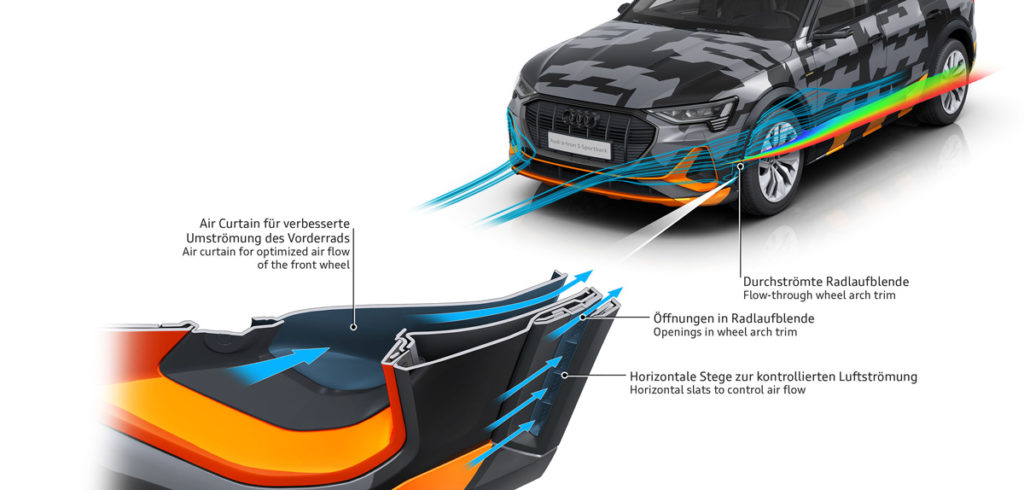In an effort to maximize the overall efficiency of its new e-tron S model, Audi pushed hard on the aerodynamic development of the vehicle, to minimize drag both from the body and cooling system. Leveraging extensive CFD and wind tunnel testing, this resulted in an impressive level of detail engineering on the car’s aerodynamics.
Detailing the development, Audi said that controlled airflow at the front wheels is fundamental to the aerodynamics concept. Here, side air inlets in the front – termed air curtains – route the air over a channel in the wheel housing to optimize the airflow to the wheels and the vehicle flank.
The airflow through the wheel arch trims serves the same purpose: narrow horizontal bars in the recesses formed by the widened trims in the front channel the airstream to surround and encapsulate disruptive swirl in the wheel houses.
The upshot of this design is “cleaner” airflow along the vehicle flank with reduced flow losses. The design of the 20in wheels as well as the tread and the pattern on the sidewalls of the tires have also been optimized accordingly. The result is an efficient Cd of 0.26 (compared with the standard e-tron’s Cd of 0.28).
The aerodynamics concept of the e-tron S models continues under the vehicle floor. Here underfloor paneling with spoiler elements cleanly routes the air around the vehicle. The underfloor structure, together with the aluminum cover plate for the high-voltage battery, is enclosed. Where exterior fasteners are necessary, these sit in indentations in the panels, which much like the dimples on a golf ball, alter the boundary flow conditions along the underfloor, reducing drag.
Drag from cooling systems is another important contributor to overall efficiency, and here, Audi harnessed active aerodynamics, providing movable louvres to control flow to the car’s cooling system.
At speeds between 48km/h and 160km/h (29.8mph and 99.4mph) these are usually closed so that the air flows over the hood with virtually no swirl. If the air conditioning system or the drive components require more cooling air, the louvers open gradually. If the hydraulic wheel brakes are subjected to extremely high loads in exceptional circumstances, the controllable cool-air inlet opens two channels that route air to the front wheel arches.


